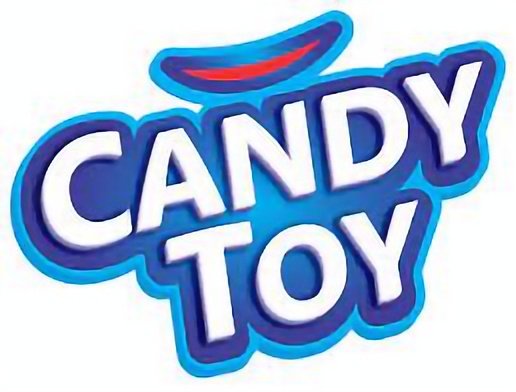Content
If you have cannabis use disorder and need help quitting, professional treatment is available. Other pharmacologic alternatives were also explored with mixed to unproven efficacy. Corticosteroids, histamine-receptor antagonists, neurokinin-1 receptor antagonists, serotonin receptor antagonists, and opioids have been explored in case reports and preliminary studies but have not yet adequately proven efficacy 42. Studies that were purely theoretical without clinical https://ecosoberhouse.com/ data or those that focused exclusively on animal models were excluded, as the review aimed to capture human clinical insights into CHS.
The most trustworthy clinical guidance
Only peer-reviewed articles, case reports, clinical trials, and review articles focusing on CHS or its comparison with similar disorders (e.g., CVS) were considered. Both primary research and secondary literature, such as systematic reviews and meta-analyses, were included to provide a broad perspective on the condition. Clinicians should inform patients that their symptoms are directly related to continued use of cannabis.
Table 1. Characteristics of Cannabinoid Hyperemesis Syndrome (CHS) and Cyclic Vomiting Syndrome (CVS).
- Despite the increasing popularity and legalization of cannabis in many states, there remains a lack of consistent and comprehensive public health policies to address cannabis-related disorders like CHS.
- The cumulative synthesis (see Table 1) demonstrated that among 64 patients with documented cannabis cessation, 62 (96.8%) had complete resolution of symptoms.
- Examples of cannabinoids include tetrahydrocannabinol (THC) and cannabidiol (CBD).
This may include providing information marijuana addiction about potential cognitive, psychiatric, and physical harms of cannabis use, plus clear patient-centric recommendations. Many adolescents use cannabis to manage anxiety, depression, and/or prior trauma, in which case it is crucial to offer safer options, including psychotherapy and pharmacotherapy with well-studied efficacy and AEs. CB1 and CB2 receptors line the gut, influencing motility, inflammation, and microbial balance. This positions cannabis as a promising ally for conditions like nausea, IBS, and IBD.
Cannabis and Digestive Health
Cannabinoid hyperemesis syndrome (CHS) can affect people who use cannabis (marijuana) long-term. Studies focused on individuals diagnosed with CHS, as well as those with comparable conditions like CVS, were selected. Emphasis was placed on studies that reported on demographic information, symptom patterns, diagnostic criteria, and treatments.
While several treatments provide symptom relief, it is important to be cautious with certain medications. Narcotic pain medications, for instance, should generally be avoided in CHS patients. Opioids may exacerbate CHS symptoms due to their association with bowel dysfunction, and they could also potentially lead to opioid dependence in chronic users 47. Additionally, the prolonged use of certain antiemetics, such as ondansetron, may have limited benefit in CHS, further highlighting the need for individualized management plans. Tricyclic antidepressants (TCAs), such as amitriptyline, have shown promising efficacy in the management of CVS and have been explored as a potential prophylactic treatment for CHS. These medications can be initiated during acute episodes of CVS and CHS to help stabilize symptoms and are often continued in a tapered manner following hospital discharge as part of long-term outpatient maintenance therapy.
Emergency Care BC
This information is not published but raises questions regarding the role of an unidentified molecule, whether cannabinoid or non-cannabinoid (e.g., a pesticide) may precipitate of the syndrome. In practice, clinicians may have evolved treatment algorithms for managing CHS patients, but our search did not identify any studies reporting this. Data were extracted from individual case reports and summarized as a single large cohort (individual case report synthesis). Next, after exclusion of duplicate cases, the individual case reports were combined with data from the case series and summarized as a single larger cohort (cumulative synthesis). Median values (plus interquartile range) were calculated for age at diagnosis, cannabis use age of onset, and age at symptom onset. The duration of cannabis use prior to symptom onset was categorized as either less than or equal to 1, 2 to 5, 6 to 10, and greater than 11 years.
This concern is particularly pronounced in individuals already experiencing sequelae of recreational drug use, necessitating careful patient selection and monitoring when considering benzodiazepines as part of CHS management 43. The only treatment identified to fully resolve the symptoms of CHS is cannabis cessation. In contrast, patients who continued using cannabis experienced persistent symptoms.
- Therefore, substance abuse experts should be involved when the diagnosis is made.
- For example, elevated serum cannabinoid levels or certain patterns of urinary metabolites could help confirm chronic cannabis use, though further research is needed to validate these approaches.
- The HPA axis and sympathetic nervous system must balance their roles to mediate the stress.
- The expert consensus process used to develop the model guideline is also described.
POINT-OF-CARE EMERGENCY CLINICAL SUMMARY
Very low-quality studies are defined as triple-downgraded randomized trials or downgraded observational studies or case series/case reports. Cannabis has presumably been used by humans for thousands of years, 8 yet CHS is only now being recognized. CHS has been reported numerous times in 9–11 large case series, small case series, and more than 80 individual case reports 6, 8, 11–82. There are many suggested pathophysiologic mechanisms of CHS, though evidence for each is minimal (see Table 3). It is not clear why cannabis appears to suppress emesis under certain circumstances and induces it in others. It is also unknown why only some individuals develop CHS when the use of cannabis is so widespread.






















